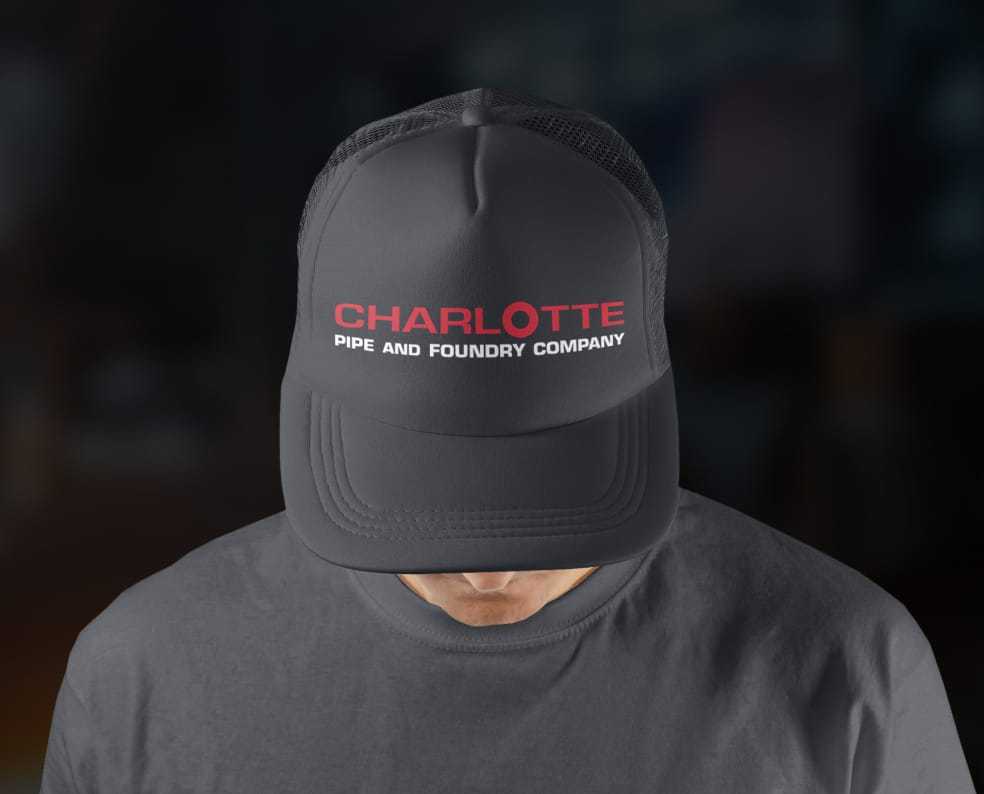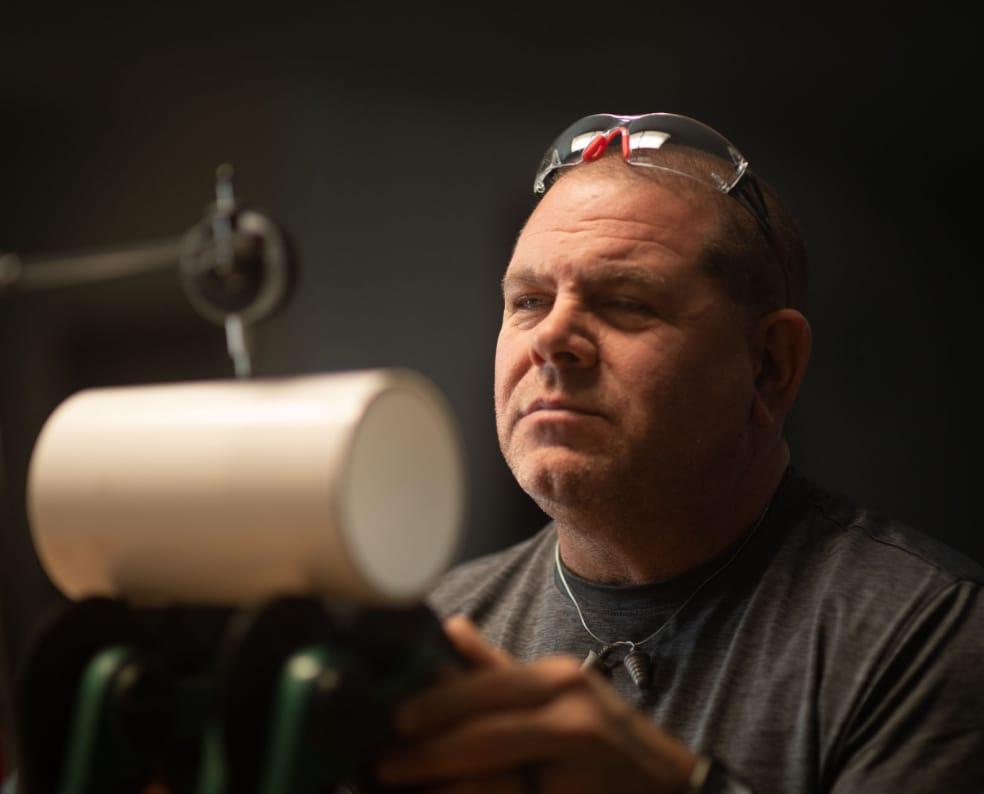Article
Combating UV Degradation in Plastic Piping Systems
Plastic pipe and fittings, such as ABS, PVC, and CPVC, are widely used in both commercial and residential plumbing systems due to their durability, ease of installation, and cost-effectiveness.
However, prolonged exposure to the sun’s ultraviolet radiation can degrade the surface of these popular plumbing materials. Intense UV radiation can break down the molecular chains in the plastic, resulting in physical changes, a reduction of impact strength, and reduced performance.
Whether exposed to UV rays while being stored on the jobsite or as a result of above-ground installation, plastic piping is at risk of degradation if proper measures aren’t taken to protect it from the sun’s rays.
The large-diameter pressure pipe on the right was stored outdoors, unprotected from UV radiation for 15 years. Source: Uni-Bell.
What are the effects of UV exposure on plastic pipe?
From sun-bleached patio furniture to weathered exterior components of a vehicle, examples of plastic degradation from UV radiation are around us. For plastic piping materials used in plumbing applications, some of the adverse effects from constant UV exposure include:
- Color change: Over time, UV exposure can cause plastic pipe to discolor, typically turning yellow or brown in PVC and a faded or bleached effect may occur in ABS.
- Surface cracking: The UV radiation can cause the surface of the plastic pipe to become brittle and crack.
- Lowered impact strength: Over time, the plastic can lose its tensile strength and impact resistance, making it more prone to damage from outside impact.
- Heat buildup: Radiant heat from the sun can increase pipe surface temperatures by 50 F or more, potentially causing the system to exceed its maximum working temperature.
- Decreased life span: Overall, UV exposure shortens the functional life span of plastic pipe.
“UV radiation affects ABS, CPVC, and PVC when energy from the sun causes excitation of the molecular bonds in the plastic,” said Brian Helms, training manager at Charlotte Pipe and Foundry. “The resulting reaction occurs only on the exposed surface of the pipe and to the extremely shallow depths of 0.001 to 0.003 inches. The effect does not continue when exposure to sunlight is terminated.”
UV radiation affects ABS, CPVC, and PVC when energy from the sun causes excitation of the molecular bonds in the plastic. Brian Helms Training Manager
5 Methods to Manage Potential UV Degradation of Plastic Pipe
While prolonged, direct exposure to UV radiation can physically damage plastic piping materials, there are several ways plumbing professionals can combat the potential for harm to the plumbing system.
1. UV-Resistant Materials
Some plastic pipes on the market are specifically formulated to resist UV radiation. These pipes, however, are more common in industries other than plumbing. Products like furniture pipe, used to make lawn furniture, contain high amounts of UV inhibitors which help to prohibit the polymer chains from breaking down over time. Although PVC, CPVC, and ABS piping materials contain small amounts of UV inhibitors such as titanium dioxide or carbon black, the presence of these substances does not completely prevent adverse effects of UV exposure.
Charlotte Pipe manufactures a complete line of plastic products, including ABS, PVC, CPVC, FlowGuard Gold®, and ChemDrain® pipe and fittings — all of which meet or exceed industry standards. Not all piping materials are created equally, however. Although not immune from all adverse effects from UV exposure, CPVC does not suffer a reduction in pressure bearing capability as compared to other piping materials. Other effects such as surface color discoloration and a reduction of impact strength may still occur. Precaution should be taken to protect ABS, PVC, and CPVC piping systems from UV degradation.
2. Protective Coatings and Wraps
Applying a protective coating such as a UV-resistant paint or an opaque covering such as specialized plastic wrap can help shield the pipe from the negative impacts of direct sunlight. These coatings act as a barrier, preventing UV radiation from reaching and deteriorating the pipe surface. The chemical compatibility of wraps or coverings should be verified prior to installation.
The most common method used to protect aboveground ABS, CPVC, and PVC pipe from the sun is painting it with a latex (water-based) paint. Preparation of the surface prior to painting is very important: The pipe should be cleaned to remove moisture, dirt, and oil and wiped with a clean, dry cloth.
Note: Petroleum-based paints or oil-based enamels should not be used, as the presence of petroleum will prevent proper bonding of paint to the plastic pipe and may be chemically incompatible with the piping system.
3. Proper Installation Techniques
Whenever possible, plastic piping should be installed in shaded areas or under structures designed to provide shade. This can significantly reduce UV exposure before, during, and after installation.
For pipelines that run outdoors, burying them underground provides full protection against UV degradation. Ensure proper trench depth and backfill material to avoid physical damage.
4. Regular Maintenance and Inspection
Regularly inspect outdoor plastic pipes for signs of UV damage such as discoloration, cracks, or brittleness. Early detection of UV degradation can allow for timely repairs or replacements, preventing more significant issues.
5. Education and Information
Plumbing contractors should inform their clients about the potential risks of UV exposure to plastic piping and discuss protective measures. Clients should understand the importance of maintaining and protecting their plumbing infrastructure from environmental factors.
UV degradation can threaten the performance and life span of plastic piping systems. By selecting the right materials for the application, using protective coatings, employing proper installation techniques, and conducting regular maintenance, plumbing contractors can effectively manage potential issues and ensure the longevity and reliability of the plumbing system.
For questions or concerns about UV degradation, contact Charlotte Pipe’s Technical Support team.



